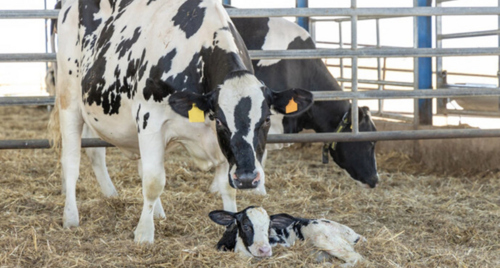| LONG-TERM PROBLEM: Dairy heifers will remain tight for the next two to three years at a minimum, dairy economist Corey Geiger says. |
By Fran O’Leary, Sr. Editor, Wisconsin Agriculturalist magazine
While “eggflation” continues to garner mainstream headlines due to historically tight egg supplies and record-high grocery store prices, dairy heifers ready to enter the milking herd have become another agricultural headline due to tight supplies and high prices.
“However, dairy heifers are not making national news because consumers aren’t directly buying those animals,” says Corey Geiger, lead dairy economist for CoBank.
Fewer dairy heifers
USDA just released its Cattle report, Geiger says. “Any way you work the corral, there’s fewer heifers in that corral with each passing year as dairy farmers pivot to breeding dairy cows to native beef bulls to capitalize on record beef prices,” he explains. “That trend will not slow down anytime soon, as live cattle futures have pushed into the $200-per-cwt range and represent an all-time high.”
In its latest estimate, published in late January, USDA projects there are 3.914 million dairy heifers in the 500-pounds-and-higher category.
“Generally speaking, those dairy heifers 500 pounds and larger are either ready to enter breeding pens or those that are pregnant and will soon enter the milk barn,” Geiger says. “That 3.914 million total is the lowest since 1978, when USDA calculated that there were 3.886 million heifers in that herd category.”
Those market interactions have caused dairy replacement values to soar to record levels, with USDA pegging the average price at $2,660 per head. Vermont leads the nation at $2,930 per head, and Wisconsin is a close second at $2,860, according to USDA’s Agricultural Prices report. On the other end of the spectrum, Kansas is the national low at $2,350, despite new dairy plant capacity coming on line in that region.
“Those prices reported by USDA tend to lag real-time reports from auction barns,” Geiger says. “High-quality Holstein replacement heifers have routinely fetched over $3,000 per head, with some premium heifers receiving over $4,000 per head in California and Minnesota auctions.”
Caught by surprise
If one looks at the latest USDA report, it doesn’t tell the entire story of just how scarce dairy heifers have become. The Jan. 31 Cattle report indicates there are 3.914 million dairy replacements compared to 3.951 million at the same time one year earlier. At a 36,900 spread between the two years, dairy heifer inventories are down just 0.9%. However, that’s only half the story, Geiger says.
“In its latest report, USDA officials revised its original January 2024 heifer estimate of 4.059 million head down to 3.951 million head,” he notes. “That’s a hefty 108,000-head shift in just one year and represents a 2.7% downward adjustment.”
This isn’t the only major revision. As reported in CoBank’s report Dwindling Dairy Heifer Numbers May Inhibit New Milk Production, USDA had a similar adjustment on its January 2023 numbers.
“Between 12 months of reporting, the federal agency shifted heifers down from 4.337 [million] to 4.073 million head — a 263,600 adjustment, or a 6.1% shrink, largely propelled by the beef-on-dairy super-trend,” Geiger says.
When these two adjustments for January 2023 and January 2024 are combined into one number, it means USDA revised its dairy replacements down by 371,600 head for an 8.6% reduction.
To read entire report, Click Here.




